
Some consider the pursuit as an Easter Egg hunt for hunters and as a great cure for cabin fever; whatever your reason for heading outdoors to hunt shed antlers, it's always a good time.
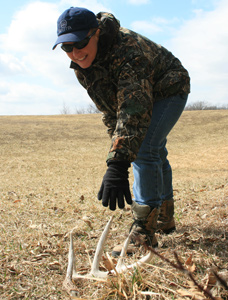
In addition to finding antlers that reveal important clues about the deer, elk or moose in the area, you can also use the antler hunting trips afield for several other hunting-related purposes. And if you want to widen the eyes of the next generation of hunters, invite some kids to go with you on the antler hunt. The warming days of spring are upon us, it's time to get out after those antlers!
For some this rite of early spring is as exciting as the hunts for complete bucks or bulls that were undertaken months earlier. After all, it is the bony antlers that most hunters seek and dream about. Finding and grasping a big shed antler will bring a tingle to most any hunter -- and foster dreams about hunting opportunities in the fall ahead.
The antler hunting craze is growing. And while deer produce the most antlers in America, there are also hunters who hunt the sheds from moose and elk. They're all fun to hunt, and more places are joining the efforts to find cast antlers. Some lodges that host hunters in the spring are now also hosting hunters — and their families — in early spring to hunt for shed antlers.
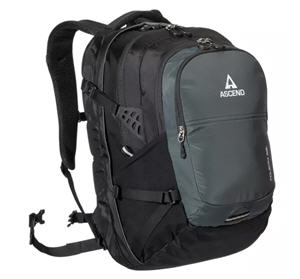
Before you begin the hunt in earnest, you'll need to gather some gear, most of which you probably already own. The first is a pair of comfortable waterproof boots, as you should expect to walk many miles. Next, grab your binoculars, preferably with a shoulder harness suspension system. Binoculars like the Cabela's Intensity HD Compact system can save you many unnecessary steps and help spot distant antlers. You will also want a daypack like the Ascend Folsom for water and food when making a day trip, and to haul back your recovered antlers when the day is done. Warning: after you find that first antler, you'll be hooked.
X Marks the Area to Find Shed Antlers
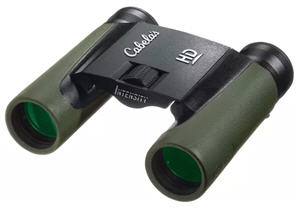
One positive side benefit of most deer management programs today are that they have created more opportunity to find shed antlers since more bucks live past the end of hunting season. In fact, hunters where I hunt often start looking for antlers along the deer trails that snaked past their favorite hunting stands. These hunters also know where deer bed, where they feed, and the routes taken between. And most hunters also know where the deer in their hunting areas spend the winter days. The hunt for antlers begins around bedding areas and along game trails.
As you come to intersections of deer trails, take the time to scan left and right, and up and down, trails. Anything with a noted curve or that comes to a sudden point needs closer attention as does any item that looks chalky white. After you find a few antlers, finding more shed antlers seems to be easier. And some hunters return to the same areas year after year to hunt for antlers. They know brushy areas where deer hunker down to escape raw winter winds, and bedding sites that are close to late winter food sources.
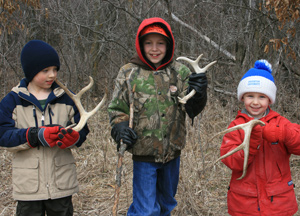
After walking a trail in one direction, never walk along it again during your search. Walk off to one side, and always scan to the sides of the area you are passing through. One reason that some hunters miss spotting antlers on the ground is because they are too narrow focused on the trail ahead and fail to let their eyes wander. And should a trail that you are following head into dense brush, go in as far as possible and search all around the area and on the sides where other trails exit the brush. Overhead limbs and dense brush have pulled many an antler loose from its pedicle.
Follow Well Used Deer Trails
If you plan to take up the hunt and follow well used deer trails, when any trail comes to fences, creeks, ditches or across thick logs, slow down and begin looking carefully. Any jump and the following impact when a deer lands on the ground seems to jar loose aging antlers. Obviously sites where deer bound over farm fences are good places to search, and feel free to follow the fences along long spans while you scan along both sides. I rarely find antlers stuck in fences, but some antler hunters do. It's the sudden landing after a hop that seems to spring an antler loose from its base. And the antler might tumble shortly after the jump, so look at least 20 yards away from fences.
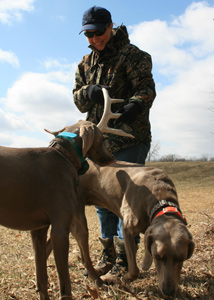
Fences are not the only sites where antlers fall free. Other sites are along creeks and river banks, and along roadsides where a deer must jump up or down a bank.
If you also have a narrow ditch running through your hunting area, that's a top place to search. Again, when a deer goes up and comes down with a thud, an antler could come off. And be certain to look in a wide area around these obstacles.
Best Weather for Finding Deer Antler Sheds
In some regions deer antlers start dropping before or around Christmas. And I've seen great bucks in Mississippi wearing their antler crowns in the last days of March. The time to drop varies by region, and by year. There's no set date, so search away when you have free time during winter and spring.
The downside is that during winter antlers can be hard to spot in snow, and deep, soft snow can make the hunt frustrating. I easily spotted some antlers in an area with barren ground after I had searched in earnest there the week before. The difference was that on the first trip a foot of snow covered the ground. If you decide to search when snow blankets the ground, it's best to walk well worn deer trails. Step slowly and look carefully.
| The author with a group of antlers picked up in just a few days. |
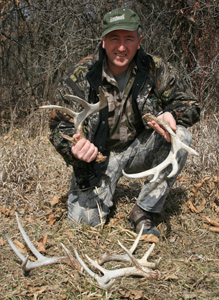
Another aid in finding antlers is the sun. You'll spot far more antlers with the sun at your back or over a shoulder, so plan your hunts and routes in areas based on the time of day and the sun's location. Walking into, and staring into the sun, can give you a headache and lessen your chances to spot a "bone." I also look as much as possible on an overcast day or when a light rain is falling. Antlers just seem easier to spot on the ground then as the light color stands out against a now wet and darker background.
Antler Hunting is a Good Reason to Get Outdoors
After long, cold winters and hours confined to the warmth of your home, antler hunting is a top reason to return to the great outdoors. When snow melts or frosts cease, and before grasses grow green, is the prime time to search. You can see far in the forests and fields, and game trails are more obvious. You can also use these trips to search out hunting sites for the fall ahead, or to scout for turkey hunting areas. When possible, never go antler hunting alone.
A walk in the woods is a good time to get your hunting dog out for some much needed exercise. Some serious antler hunters have also trained dogs to assist in the search. This can save you a lot of walking and time. But there are others who can aid in the hunt for shed antlers.
Always invite your wife, the kids, and some neighborhood kids to join you. Finding an antler seems as big a way to hook youngsters on the outdoors as going deer hunting. And kids have an advantage-they are low to the ground and can go under brush we might walk around. Just don't be too surprised when they drag up an antler as big as they are.
And if your kids are small and only show a lukewarm interest in the outdoors, consider "salting" the area where you'll take them hunting. Tossing out a few antlers for them to discover can get them hooked on all things hunting and help them learn about the outdoors. Just keep the walk at a slow pace and over terrain that they can easily cover. The outing should be fun. The antlers have — or are — dropping. Get out after them. Good luck!
- 6058 views

